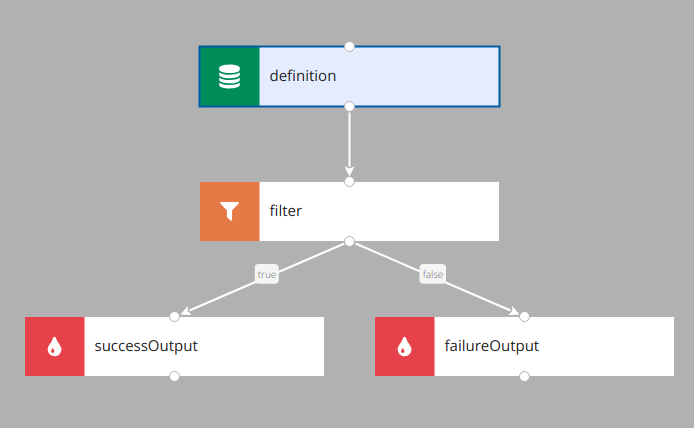Fragments
Fragments are a way to share processing logic - if many scenarios require identically configured chains of components, fragments provide a method to avoid repetition of these chains across multiple scenarios. Fragments are a design time concept; the logic of a fragment will be executed (included into the scenario and associated Flink job) as many times as there are references to the given fragment in the deployed scenarios.
Once a fragment is created using Designer (see Fragments tab) it can be used in other scenarios in the same category.
Inputs
Fragment can have one input. You can define parameters of a fragment:

Outputs
Fragment can define zero, one or more outputs. Each of them has a name (which should be unique), main scenario can then choose appropriate output. Below you can see fragment with two outputs:

Limitations of fragments
- They cannot access variables from the main scenario if they are not passed as parameters.
- They cannot be nested (i.e. fragment cannot invoke other fragment).
- They cannot pass output variables to the main scenario. This may change in the future.
- When inputs/outputs of fragment change, scenarios using it have to be corrected manually.
- If fragment uses some component which clears variables (e.g. aggregation with tumbling window on Flink engine), variables will be cleared also in the main scenario, even though they were not passed to fragment through fragment's input.